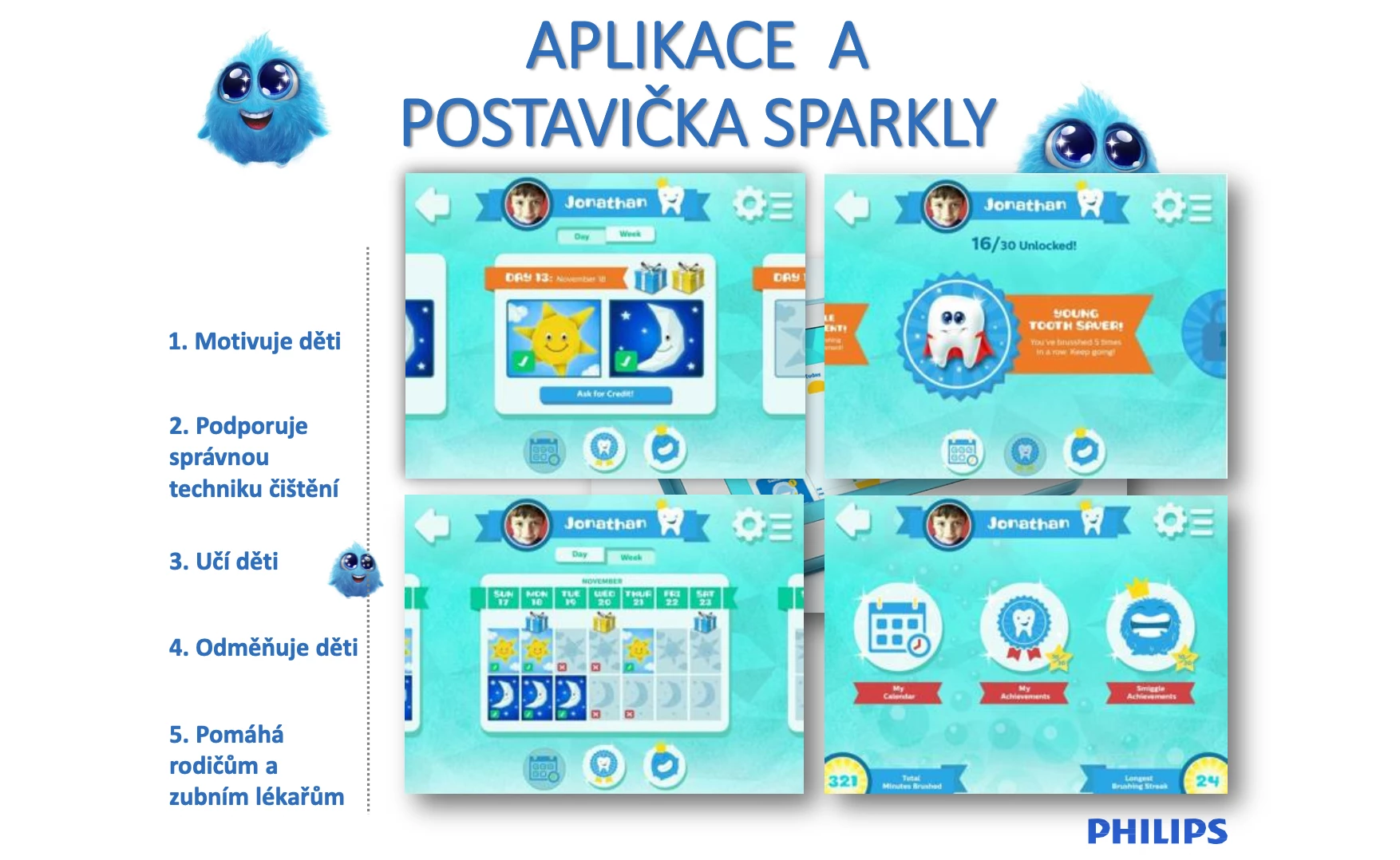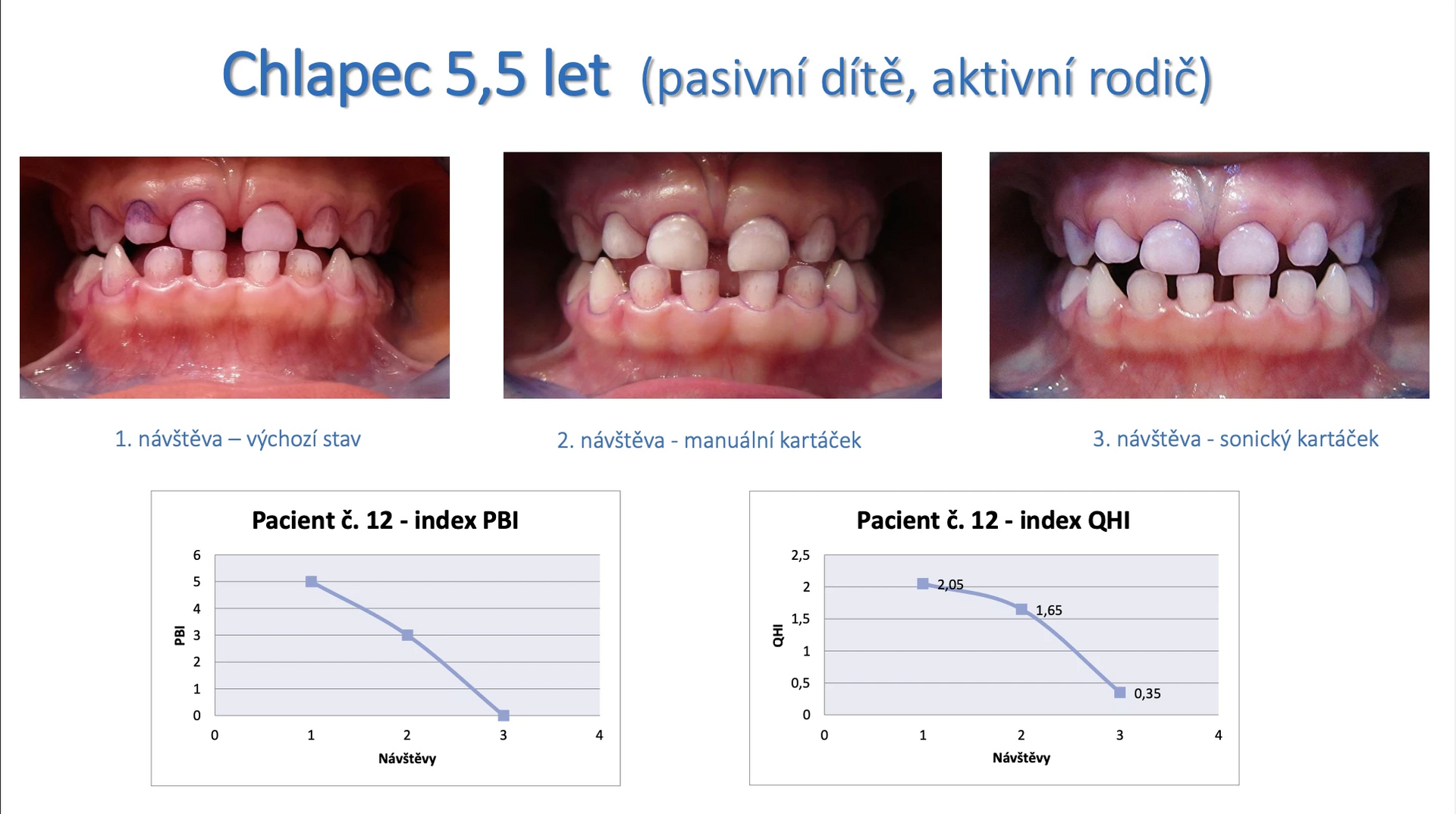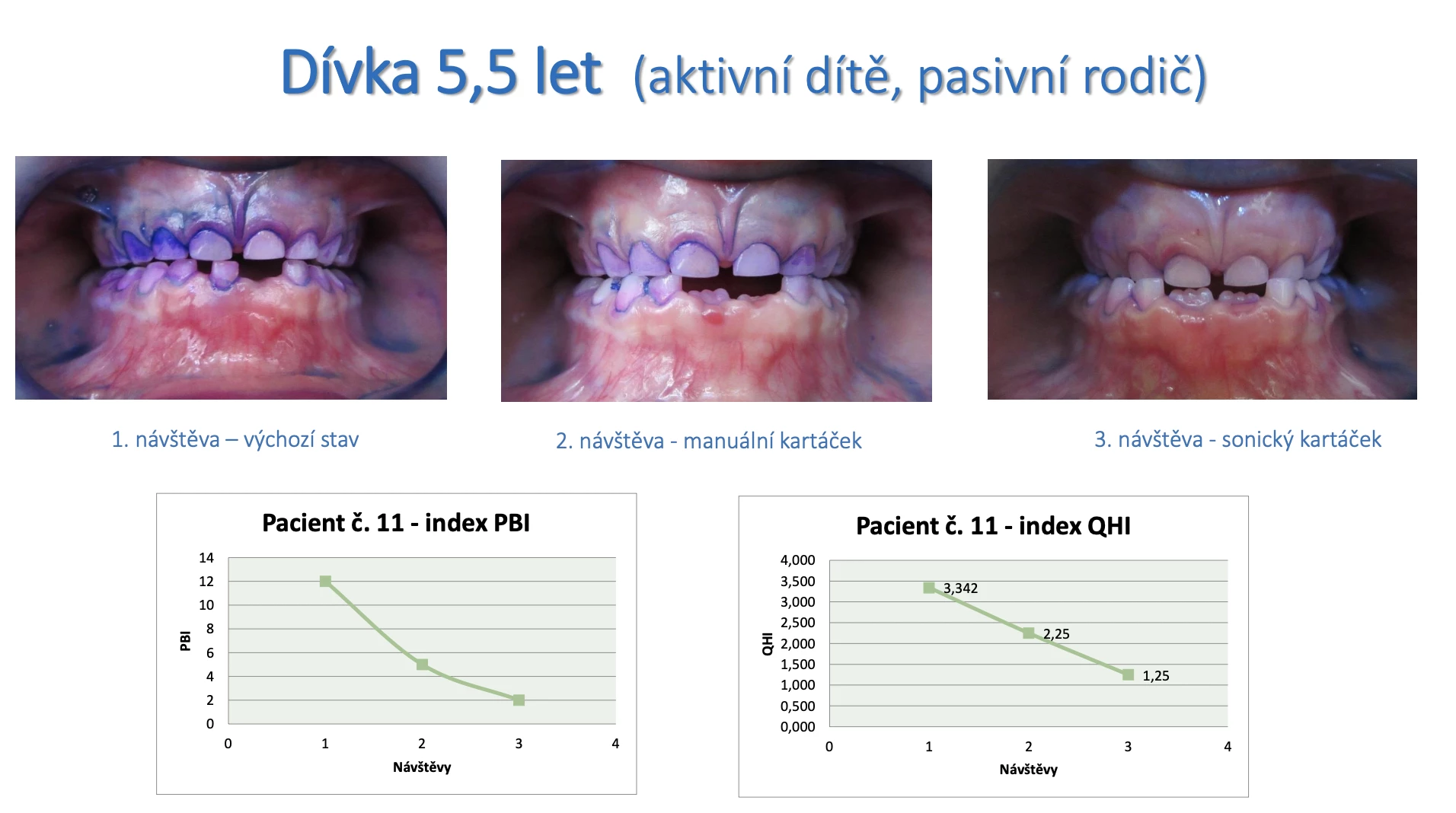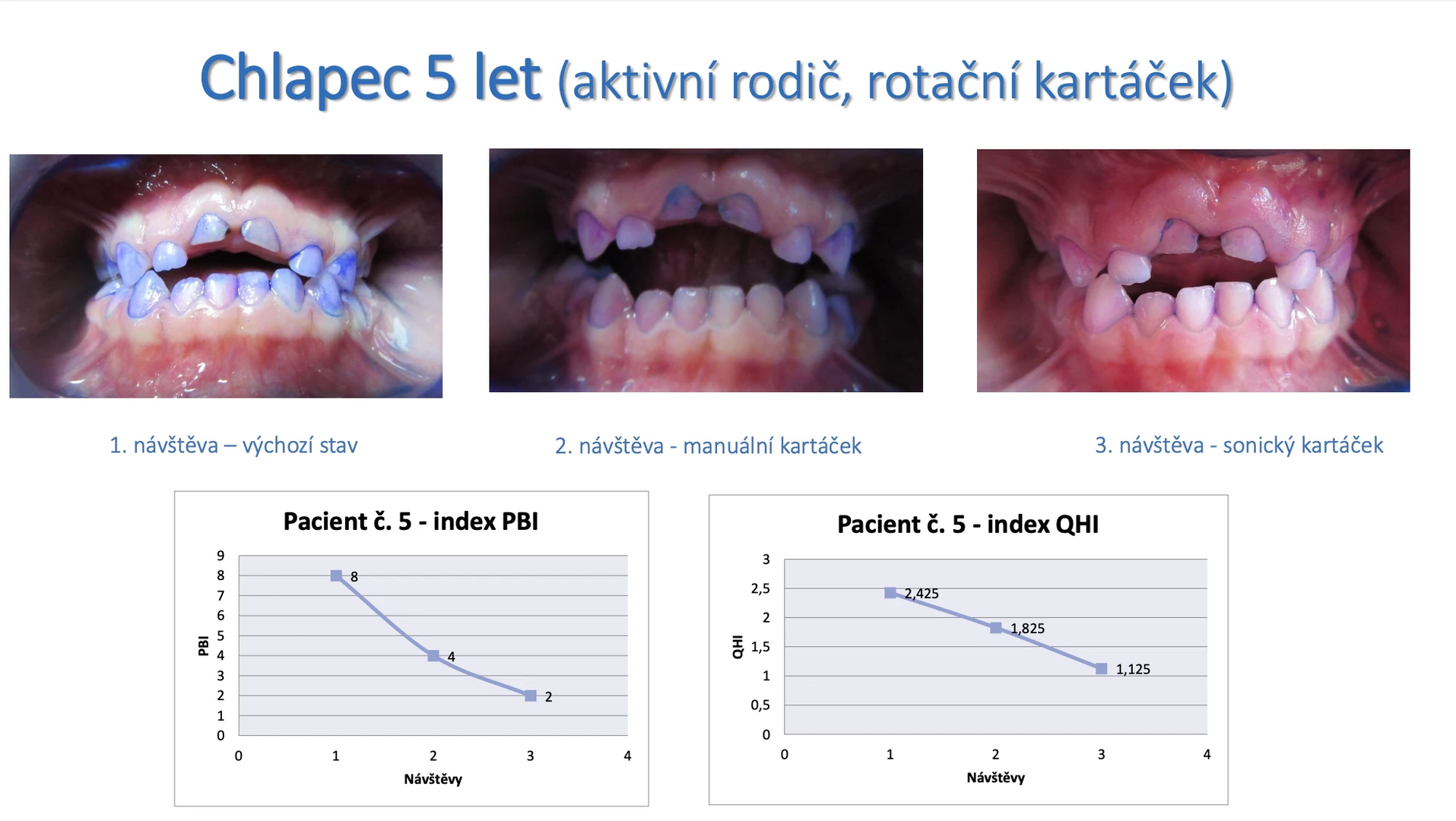Effectiveness of the Sonicare For Kids Toothbrush in Preschool Children
A comparative study conducted as part of a graduation thesis in the field of Certified Dental Hygienist offers a comparison of the cleaning effectiveness of a manual toothbrush and a sonic toothbrush in children aged 4−5.5 years. The sonic toothbrush proved to be an effective tool with good results for this age group.
COMMERCIAL MESSAGE
Sonic Toothbrushes for Children
Principle of Operation
Sonic toothbrushes operate on an entirely different principle than rotary brushes. The bristles of sonic brushes perform a sweeping vertical oscillating motion that very effectively disrupts plaque on the teeth. The tips of the bristles, due to the high frequency of sweeping, create high shear friction, which disrupts and removes the plaque. At the same time, a dynamic wave is created that reaches along the gum line and into the interdental spaces. However, it is still recommended to finish cleaning the interdental spaces with interdental tools.
Philips has developed a special toothbrush for children, the Philips Sonicare For Kids, using unique sonic technology. It can also be connected to an app that helps monitor the method and duration of tooth brushing and motivates the child to brush in a playful manner.
Using Sonicare For Kids
The bristles on the head of the sonic toothbrush are placed at a 45° angle towards the apex, partly on the marginal gingiva and mostly on the tooth; after a few seconds, the brush head is simply moved to the adjacent tooth. The brush head covers the entire surface of the tooth on primary teeth, so it is not necessary to combine the tooth-to-tooth movement with a slow sweeping motion. A very simple sliding motion is used to place the bristles from one tooth to another, continuing throughout the oral cavity until all teeth are cleaned from both the vestibular and oral sides, as well as the occlusal surfaces. The brush heads are shaped similarly to conventional toothbrushes and are replaceable. A mini head is designed for children from 3 years of age. The standard head is intended for children from 7 years of age.
Fig. 1 Sonicare For Kids Sparkly App

Comparative Study of Using the Sonic Toothbrush in Children
Methodology
A total of 12 children aged 4−5.5 years were included in the research. They attended 3 visits in total, during which they received education on brushing (both children and parents) and parents completed questionnaires. The course of the visits was as follows:
T0 = 1st visit (baseline)
- questionnaires for parents
- educational lecture
- dental examination, determination of gum bleeding index PBI, plaque staining, determination of hygiene index QHI, photo documentation
- instruction with a manual toothbrush − small circles
T1 = 2nd visit (4 weeks)
- discussion with parents
- PBI, plaque staining, QHI, photo documentation
- instruction with the sonic toothbrush
T2 = 3rd visit (8 weeks)
- discussion with parents, questionnaire for parents
- PBI, plaque staining, QHI, photo documentation
During the first visit, children started brushing their teeth using the technique of small circles, which they practiced with parental assistance over the following 4 weeks. During the second visit, children were then educated on how to properly use the children's sonic toothbrush according to the manufacturer's recommendation. Children brushed only with the sonic toothbrush for 4 weeks.
Results
In all cases, there was an improvement, to a greater or lesser extent, after using the children's sonic toothbrush. Thus, the sonic toothbrush showed better cleaning efficacy than the manual toothbrush. The author of the study explains this result by noting that children at this age do not yet have the motor (manual) skills to precisely manipulate a manual children's toothbrush and sensitively control the small circular technique, even with parental assistance, so the final effect of cleaning with this technique did not surpass the sonic technology.
At the conclusion of the comparative study, parents were given questionnaires regarding satisfaction with both educated tooth brushing methods. Parents were interested in the sonic toothbrush and most found the price acceptable. The use of sonic toothbrushes increased the overall effectiveness of the tooth brushing process in children. However, the author recommends continuing to use a traditional manual toothbrush as a daily effective means of removing dental microbial plaque, gradually developing the child's motor skills in brushing, and supplementing brushing with interdental hygiene.
Figs. 2−4 Examples of plaque staining in specific children during the study (case 1, 2, 3)



Conclusion
Working with a sonic toothbrush is significantly easier and more attractive for a child, and it has also proven to be more effective. However, it is important to primarily teach children to master the manual toothbrush using the proper brushing technique and to consider the sonic toothbrush as a supplement to oral hygiene. Similarly, it should not be forgotten to complement sonic toothbrush cleaning with interdental space hygiene.
(norg)
Source:
1. Vondrová M. Level of Oral Hygiene and Comparative Study of Cleaning Effectiveness Using Manual and Sonic Toothbrushes in Preschool Children. Graduation Thesis. Private Higher Vocational School of Health for Dental Hygienists, 2016.
2. Křepelková J., Vondrová M. Motivation of Children − Sonicare For Kids. A Day with Pediatric Dentistry. Presentation. Philips, 2016.
Did you like this article? Would you like to comment on it? Write to us. We are interested in your opinion. We will not publish it, but we will gladly answer you.
